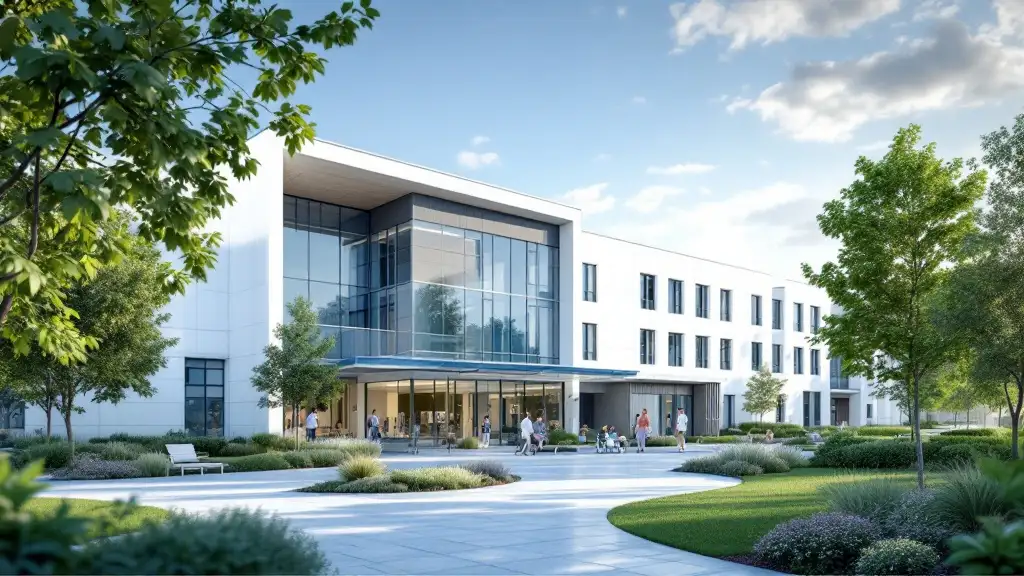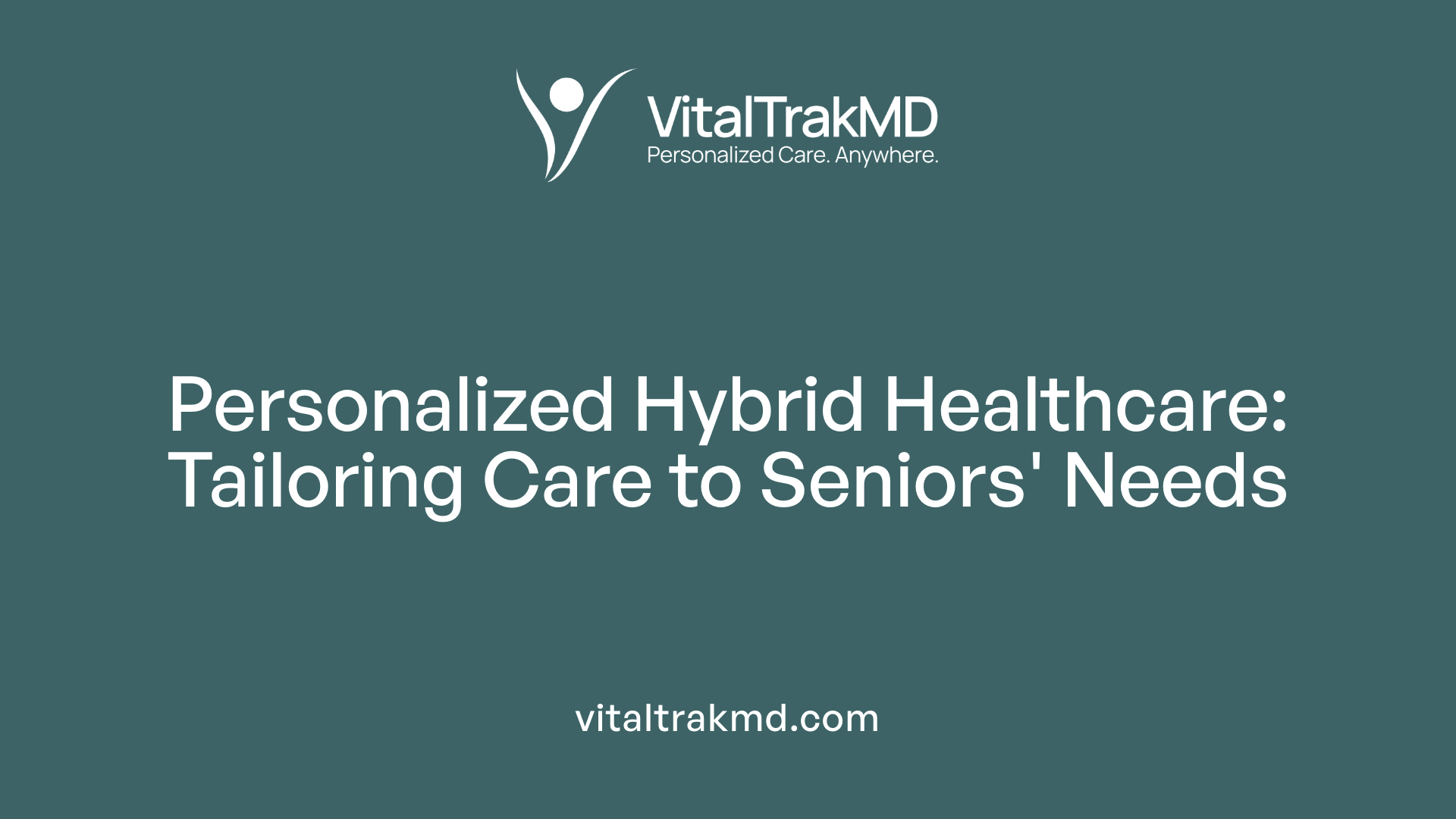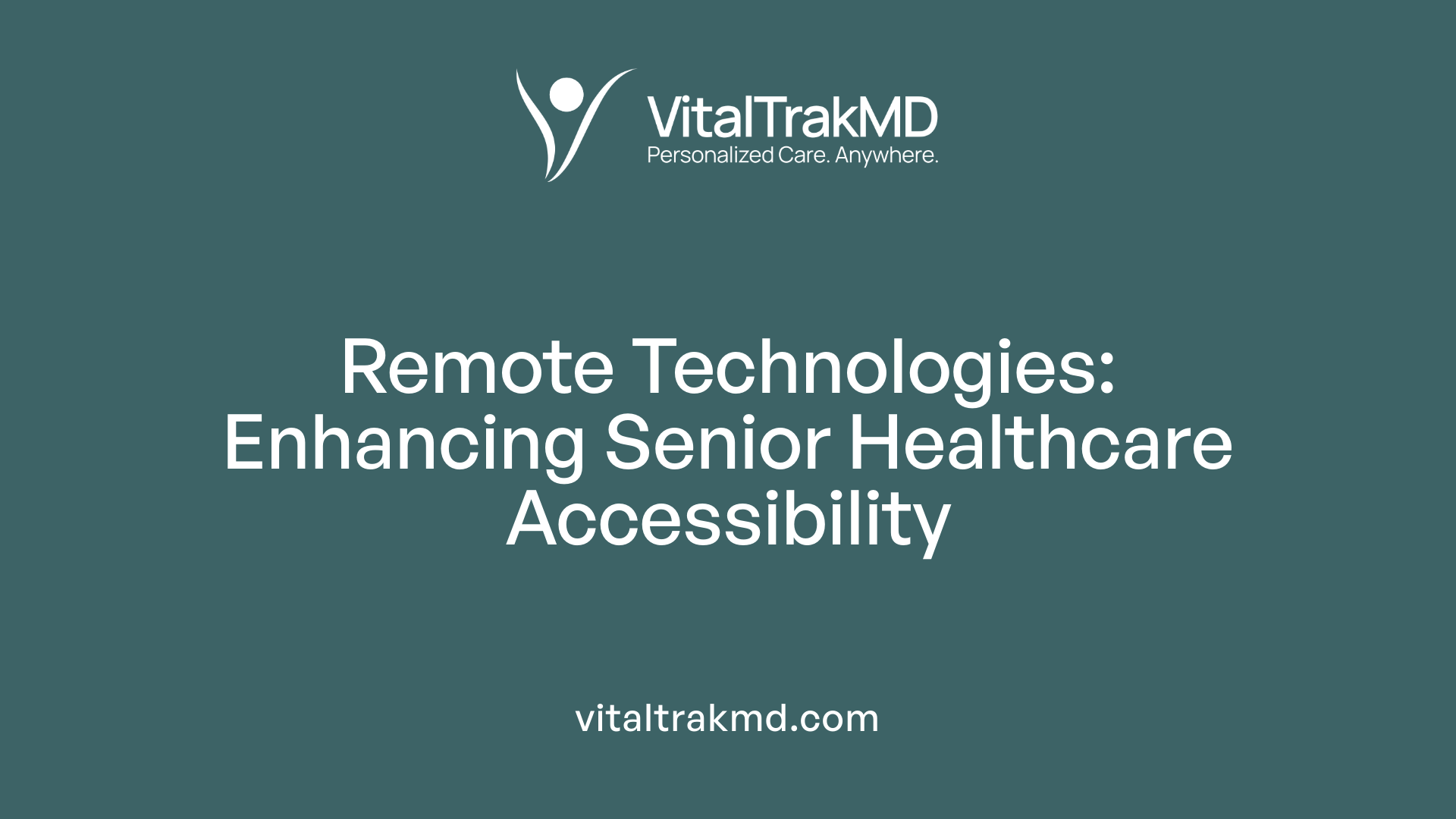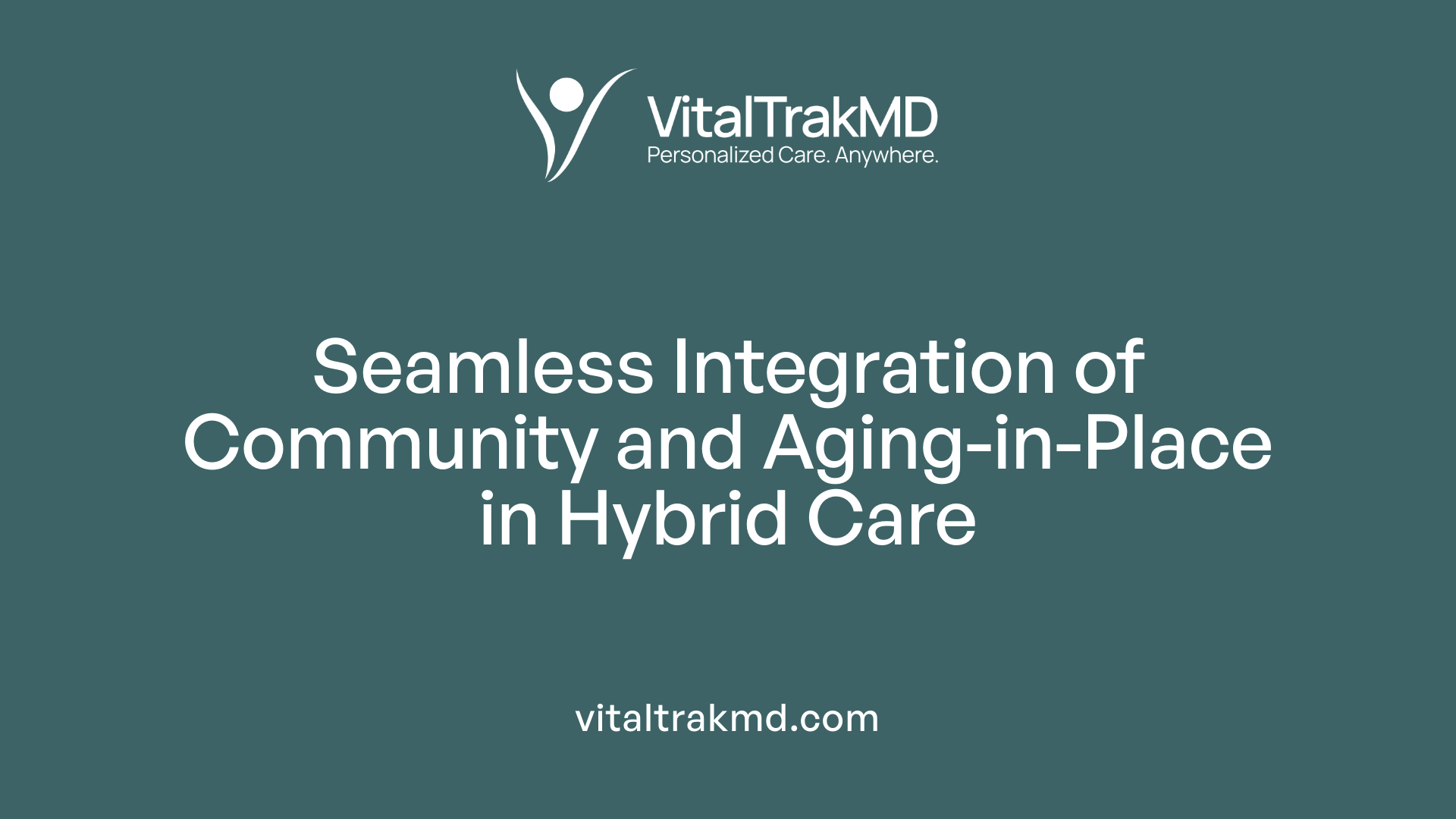Defining Personalized Hybrid Healthcare Programs for Seniors

Understanding the Need for Innovative Senior Healthcare
As the global population ages, there is an increasing demand for healthcare models that are flexible, accessible, and tailored to the unique needs of seniors. Personalized hybrid healthcare programs have emerged as a promising approach, combining traditional in-person services with modern digital technologies to enhance quality of life, safety, and independence for older adults. This article explores the core concepts, components, implementation strategies, benefits, and future directions of these innovative care models.
Defining Personalized Hybrid Healthcare Programs for Seniors

What are personalized hybrid healthcare programs for seniors?
Personalized hybrid healthcare programs for seniors are innovative, comprehensive care systems that blend both in-person and virtual health services to meet the unique needs of older adults. These programs are tailored to each individual, considering a wide range of factors such as medical conditions, emotional well-being, social environment, spiritual needs, and home setting.
At their core, these programs develop personalized care plans that involve detailed assessments, including health status, cognitive and emotional health, safety concerns, and environmental factors. These plans are dynamic, designed to evolve as the senior’s needs change over time. They incorporate various care modalities — from traditional face-to-face visits to telehealth check-ins, remote patient monitoring, and in-home support — ensuring continuous and flexible care.
Integration of multiple care modalities
The strength of hybrid models lies in their ability to seamlessly combine different care approaches. For instance, remote technologies like telemedicine platforms enable seniors to consult healthcare providers from home, reducing the need for travel and hospitalization. Remote monitoring devices track vital signs, support chronic disease management, and alert caregivers to potential issues early.
Furthermore, in-home services, such as nursing visits, physical therapy, and companionship, complement virtual care, creating a well-rounded support system. Partnerships and acquisitions, like Evernorth’s integration of MDLIVE and collaboration with VillageMD, exemplify how healthcare organizations expand primary and specialized care services through hybrid models. This not only increases access but also promotes health equity, especially for seniors who might face barriers to traditional healthcare.
Holistic, adaptable, and collaborative approach
Effective senior care requires a holistic perspective—addressing physical health, emotional resilience, social connections, and spiritual well-being. Personalized hybrid programs involve collaboration among healthcare professionals, family members, caregivers, and spiritual leaders. This teamwork ensures that care plans are comprehensive, respectful of seniors' dignity, and aligned with their lifestyle preferences.
Flexibility is a central feature of these programs. They include safety assessments, fall prevention strategies, medication management, and emotional support initiatives, all tailored to the individual’s environment and routines. Regular reassessment ensures that care adapts to changing health statuses and personal priorities.
The ultimate goal is to support seniors’ independence, improve quality of life, and foster greater system resilience. By integrating physical and virtual environments, personalized hybrid care models represent a forward-thinking approach that meets the multifaceted needs of seniors while promoting equitable, accessible, and compassionate healthcare.
Components and Structure of Hybrid Healthcare Programs for Seniors

What components make up a personalized hybrid healthcare program for seniors?
A personalized hybrid healthcare program for seniors blends remote, digital, and in-home care components tailored to each individual’s health conditions, preferences, and lifestyle. Central to these programs are digital tools such as remote patient monitoring devices, telehealth platforms, and AI-driven diagnostics that enable continuous health assessment outside traditional clinical settings.
These programs also include physical care elements like hospital beds adapted for home use and home hospitalization options. For example, the Sheba Medical Center’s internal medicine home hospitalization program employed remote monitoring, telemedicine consultations, and portable diagnostic devices to provide flexible care options.
Workflow management plays a vital role, involving careful planning of in-person visits, virtual check-ins, and timely assessments. Flexible scheduling and dedicated virtual communication spaces help ensure continuous engagement and quick response to changing health needs.
To support better care coordination, these systems incorporate digital applications for medication management, educational resources, virtual triage, and activity tracking. The integration of these components improves patient satisfaction, optimizes healthcare resources, and facilitates adaptation during crises or periods of high healthcare demand.
In essence, customized hybrid models enhance accessibility, promote independence, and ensure safety by respecting the unique needs of each senior, thereby supporting healthier aging and improved quality of life.
| Component | Description | Additional Notes |
|---|---|---|
| Remote Monitoring Devices | Devices like vital sensors and portable X-rays to collect health data remotely. | Supports early detection and ongoing assessment. |
| Telehealth Platforms | Video and phone consultations with healthcare professionals. | Facilitates frequent communication and follow-up. |
| Digital Diagnostics | AI-based diagnostics for quick analysis of health conditions. | Enables prompt decision-making and intervention. |
| Physical Care Settings | Hospital or home hospital beds designed for flexible use. | Reduces need for traditional inpatient stays. |
| Care Workflow Management | Planning tools for scheduling and workflow adaptation. | Ensures seamless transition across care settings. |
| Thematic Digital Tools | Apps focused on medication management, patient education, and activity tracking. | Enhances engagement and adherence. |
How does this integrated approach support senior care?
By combining these elements, hybrid care models create a comprehensive, adaptive, and patient-centered system. They allow seniors to age at home safely while receiving high-quality, proactive health management. As these programs evolve, they rely on continuous measurement and feedback to refine care pathways and improve health outcomes.
Implementation Strategies for Hybrid Care for Seniors

How can personalized hybrid care for seniors be effectively implemented?
Successfully deploying hybrid care models for seniors involves a comprehensive approach that blends technology, care coordination, and family involvement.
Integrating digital tools such as remote monitoring devices, telemedicine platforms, and AI-driven diagnostics creates a flexible care environment. For example, programs like Sheba Medical Center’s home hospitalization utilize tools like TytoCare kits and vital sign sensors to monitor patients remotely. These technologies allow healthcare providers to assess and manage health conditions efficiently from a distance, reducing the need for physical hospital stays.
Coordination between physical and virtual environments is essential. Hybrid models should be designed for seamless transitions between in-home care and hospital settings. This involves developing adaptable physical spaces, such as hybrid hospital units with both physical and virtual beds, supported by interoperable digital systems to coordinate care plans and share vital information.
Engagement of seniors and their families in the care process is crucial. Personalized care plans are developed collaboratively, taking into account individual health conditions, preferences, and living situations. Addressing social determinants of health and emotional well-being through tailored activities and support reduces loneliness and improves overall quality of life.
Training healthcare professionals to navigate new technologies and workflows ensures effective delivery. Creating a digital mindset among staff fosters smoother adoption and maximizes the potential of hybrid care tools.
In summary, implementing personalized hybrid care for seniors requires integrating advanced digital health solutions into care pathways, ensuring coordinated environments that support flexibility, and actively involving patients and families to tailor care that respects individual needs and preferences.
Benefits and Advantages of Hybrid Healthcare Programs for Seniors
What are the benefits of personalized hybrid healthcare programs for seniors?
Personalized hybrid healthcare programs combine the best of both in-person and digital care tailored specifically to seniors' needs, offering numerous advantages. These programs improve access to healthcare services by overcoming mobility challenges and reducing the need for frequent hospital visits. Seniors can enjoy flexible scheduling through virtual appointments and remote monitoring tools, making it easier to stay engaged with their healthcare providers.
The integration of digital health technologies—such as telemedicine, remote patient monitoring, and AI-based diagnostics—enables continuous health management. This approach allows early detection of health issues, personalized treatment adjustments, and proactive care which contribute to better health outcomes.
Safety and patient satisfaction also see notable improvements. Seniors often feel more secure knowing they are supported through regular check-ins, digital education, and immediate communication options. These elements foster confidence in self-care and promote independence.
Furthermore, hybrid models facilitate aging-in-place, helping seniors maintain their routines within familiar surroundings. They are often more cost-effective than traditional models of care, reducing hospital admissions and associated expenses.
Overall, these programs empower older adults by providing comprehensive, adaptable, and personalized health services. They support not only physical health but also emotional well-being, ensuring a higher quality of life for seniors as they age in their own homes.
Role of Remote Technologies in Senior Healthcare

How is remote technology utilized in senior healthcare programs?
Remote technology plays a vital role in enhancing healthcare accessibility and quality for seniors. It is widely incorporated through telehealth platforms that enable virtual consultations, helping seniors receive primary care, mental health support, and healthcare management without leaving their homes. This approach not only ensures easier access but also reduces the need for hospital visits, which can be challenging for elderly individuals.
Remote monitoring devices are crucial tools in senior care. Wearables, vital sign sensors, and other digital sensors continuously track health data such as heart rate, blood pressure, and oxygen levels. These tools enable proactive management of chronic conditions like cardiovascular disease and diabetes. Early detection of health issues allows timely interventions, ultimately decreasing emergency visits and hospitalizations.
In addition, smart home and AI-powered safety technologies support independence and safety. Automated systems can control lighting, thermostats, and emergency alerts, reducing fall risks and aiding seniors with mobility issues. AI-driven assistants can also provide companionship and cognitive support, helping to address issues of loneliness and mental health.
Overall, remote technologies make senior healthcare more flexible, personalized, and accessible. They foster engagement, improve health outcomes, and support aging in place, aligning with efforts to deliver equitable, patient-centered care. As these tools continue to evolve, their integration promises a future where seniors can enjoy safer, more autonomous lives supported by innovative digital health solutions.
Integrating Community and Aging-in-Place Models into Hybrid Care

How can community-based and aging-in-place care models be integrated into hybrid approaches?
Integrating community-based and aging-in-place care models into hybrid systems involves creating a seamless, comprehensive approach that caters to the unique needs of older adults. This integration combines various elements including home-based care, emergency services, and social support within a flexible continuum of care.
One effective strategy is to develop coordinated care plans that involve medical professionals, caregivers, and community resources. These plans focus on maintaining independence, managing chronic conditions, and enhancing safety at home. For example, telemedicine and remote patient monitoring enable quick access to healthcare services without requiring hospital visits.
Technology plays a crucial role in supporting seniors’ autonomy. Devices such as vital sign sensors, portable diagnostic tools, and digital communication platforms facilitate continuous monitoring and timely interventions. Transportation solutions and community programs further promote engagement and social connectivity, reducing loneliness and social isolation.
To make these models sustainable and scalable, health systems often employ evaluation strategies like hybrid effectiveness studies. These assess clinical outcomes, patient satisfaction, and operational feasibility, guiding improvements and ensuring interventions meet both health and social needs.
The ultimate goal of integrating these approaches is to foster aging in place with dignity and safety, minimizing unnecessary hospitalizations and institutional care. This holistic method promotes better health results, functional independence, and an improved quality of life for seniors, all while leveraging community resources and innovative technology.
Innovations and Future Directions in Senior Healthcare
What are current innovations and future directions in personalized senior healthcare programs?
Recent advances in senior healthcare are heavily influenced by digital innovation and a shift towards holistic, person-centered care. Currently, technologies like telehealth platforms, wearable health devices, remote patient monitoring, AI-driven diagnostics, and smart home systems are transforming how care is delivered. For example, programs like Sheba Medical Center’s home hospitalization use remote monitoring tools such as TytoCare examination kits and vital sign sensors to provide flexible, hospital-level care at home. These solutions improve safety, foster independence, and enhance social connection for seniors.
Looking ahead, the future of senior healthcare is moving toward integrated, community-focused models. These involve digital platforms that combine data from IoT devices, electronic health records, and predictive analytics to generate proactive care strategies. Initiatives like 'Future Community' ecosystems aim to harness big data to anticipate health issues before they escalate, allowing timely interventions.
Person-centered approaches are increasingly emphasized, focusing not only on managing chronic conditions but also on emotional, social, and cultural well-being. Digital health education aims to bridge the digital divide, ensuring seniors can effectively utilize these innovations. Multi-stakeholder collaborations, including healthcare providers, tech companies, policymakers, and caregivers, are essential to develop sustainable and scalable solutions.
In summary, the trend is toward more seamless, anticipatory, and comprehensive healthcare systems that empower seniors to maintain dignity, independence, and quality of life. The integration of advanced technologies with holistic care principles promises to create resilient, inclusive communities where seniors can thrive comfortably and safely.
Hospital-at-Home and Hybrid Care Models for Seniors
What are hospital-at-home and hybrid care models for seniors?
Hospital-at-home (HaH) and hybrid care models are innovative approaches that bring hospital-level acute and transitional care directly into seniors' homes. These models leverage a blend of in-person healthcare visits, telemedicine consultations, remote monitoring tools, and advanced medical devices to provide comprehensive care.
The goal is to offer a safe, efficient alternative to traditional inpatient hospitalization, especially for elderly patients with complex or chronic health conditions. They focus on delivering personalized care that reduces hospital stays, minimizes risks such as infections, and promotes comfort by allowing seniors to recover and manage their health in familiar surroundings.
Care is structured around integrated frameworks that emphasize technology-enabled solutions, coordinated services, and engaging informal caregivers like family members. Eligibility criteria are tailored to individual health needs, and continuous assessment guides the adaptation of care plans.
Ultimately, these models aim to improve health outcomes, increase patient satisfaction, and promote independence among seniors while optimizing healthcare resources. They represent a shift toward more flexible, patient-centered care environments.
Shaping the Future of Elderly Care
The evolution of personalized hybrid healthcare programs signifies a transformative shift towards more responsive, tailored, and holistic senior care. By seamlessly integrating physical and virtual environments, leveraging cutting-edge technologies, and fostering collaboration among healthcare systems, families, and communities, these models promise to improve health outcomes, enhance quality of life, and preserve independence for decades to come. Embracing innovation and patient-centered principles will be essential in addressing the complex needs of an aging population, ensuring that senior care is both sustainable and compassionate.
References
- Designing Hybrid Care With Access and Equity in Mind
- Designing for flexibility in hybrid care services - PubMed Central
- Customized Care at Home: The Benefits of Personalized ...
- The Power of Personalized Care Plans for Seniors Aging at ...
- Understanding Personalized Senior Care
- Developing a strategy for hybrid care
- Designing for flexibility in hybrid care services - PubMed Central
Recent articles
Want to Feel Better and Live Healthier?
Join hundreds of patients taking control of their health with personalized care that fits their life – not the other way around.
Rated 4.8/5 by 32+ customers







